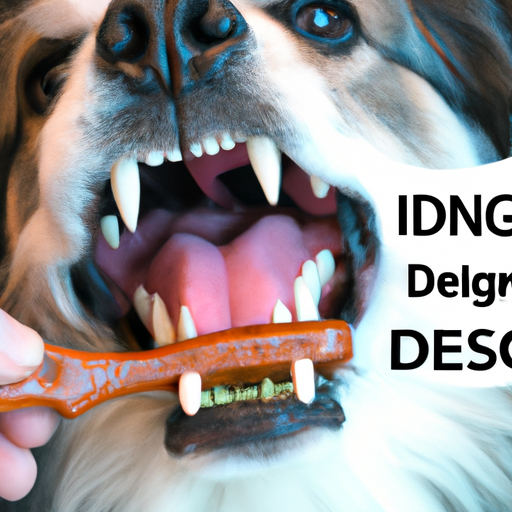As a caregiver, it is important for you to be aware of all the potential health issues that your furry friend might face. One of the most common, yet often overlooked, is periodontal disease. This comprehensive guide aims to provide you with a detailed understanding of periodontal disease in dogs.
Understanding Periodontal Disease
Periodontal disease, also known as gum disease, is a common oral health issue in dogs. It begins when bacteria combine with food particles to form plaque on the teeth. Over time, this plaque hardens to form tartar, leading to inflammation and damage to the surrounding gum tissue.
It’s not just about bad breath – periodontal disease can have serious implications for your dog’s overall health. Left untreated, it can lead to pain, tooth loss, and potentially even heart, liver, or kidney disease. So how can you prevent it?
Symptoms of Periodontal Disease
The symptoms of periodontal disease in dogs can vary widely, but there are common signs to watch out for.
- Bad breath: This is often one of the first signs of periodontal disease.
- Loss of appetite or difficulty eating: Dogs may have trouble eating due to the pain associated with the disease.
- Swollen or bleeding gums: This is a clear sign of inflammation.
- Loose or missing teeth: As the disease progresses, it can lead to tooth loss.
If you notice any of these symptoms, it’s important to take your dog to a vet for a check-up.
Preventing Periodontal Disease
The good news is that periodontal disease is largely preventable. Here are four key steps you can take to help protect your dog’s oral health:
- Regular brushing: Brush your dog’s teeth daily, or at least several times a week.
- Healthy diet: Feed your dog a balanced diet and consider dental chews that can help clean the teeth.
- Vet check-ups: Regular professional cleanings and check-ups are vital.
- Chew toys: These can help to naturally clean your dog’s teeth.
Remember, prevention is always better than cure!
Treatment of Periodontal Disease
If your dog is diagnosed with periodontal disease, your vet will recommend a treatment plan based on the severity of the disease. This could include:
- Professional cleaning: This is often the first step in treatment. The vet will clean the teeth and gums to remove plaque and tartar.
- Antibiotics: These may be prescribed to combat the bacterial infection.
- Tooth extraction: In severe cases, it may be necessary to remove some teeth.
In all cases, ongoing care at home will be crucial to your dog’s recovery and long-term oral health.
Long-Term Impact of Periodontal Disease
Without treatment, periodontal disease can have a significant impact on your dog’s quality of life. It can lead to chronic pain, difficulty eating, and potentially serious systemic health issues.
| Impact | Description |
|---|---|
| Pain | Periodontal disease can cause significant discomfort, affecting your dog’s mood and behavior. |
| Tooth Loss | Advanced disease can lead to tooth loss, affecting your dog’s ability to eat. |
| Systemic Disease | Bacteria from the mouth can enter the bloodstream, potentially affecting the heart, liver, or kidneys. |
As a caregiver, it’s essential to take steps to prevent the disease and seek early treatment if symptoms are observed.
FAQ
What causes periodontal disease in dogs?
Periodontal disease is primarily caused by plaque and tartar build-up on the teeth. This is often due to inadequate oral hygiene, but diet and genetics can also play a role.
Can periodontal disease be cured?
While periodontal disease can be managed and its progression slowed, it cannot be completely cured once significant damage to the gums and teeth has occurred.
How common is periodontal disease in dogs?
It’s estimated that over 80% of dogs over the age of three have some form of periodontal disease. This makes it one of the most common health issues in dogs.
How can I tell if my dog has periodontal disease?
Common signs include bad breath, difficulty eating, swollen or bleeding gums, and loose or missing teeth. If you notice any of these symptoms, you should take your dog to a vet for a check-up.
Can periodontal disease in dogs be prevented?
Yes, with regular brushing, a healthy diet, regular vet check-ups, and the use of dental chews and toys, the risk of periodontal disease can be significantly reduced.
In conclusion, periodontal disease in dogs is a common but serious issue. By understanding the disease, its symptoms, and preventative measures, you can help ensure your furry friend’s oral health and overall well-being.



